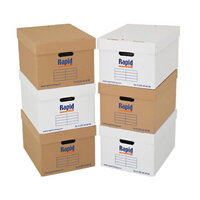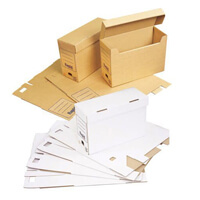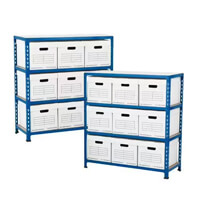As a business, it’s likely that you’ll receive tonnes of paperwork on a daily basis. You may receive client contracts, payment invoices, general correspondence and even junk mail. But what do you do with this paperwork when you’ve received it. Does it get sorted immediately into the correct file or do you tell yourself you’ll do it later?
It’s very common for businesses to become lackadaisical when it comes to paperwork. How many times have you been looking for a certain document that seems to have disappeared off the face of the earth? This is why you need to organise your office paperwork and create a filing system that works for you and your business. Luckily, we’re here to tell you how to do that.
How to create a filing system
When you’re creating a new filing system, the first thing you need to think about is how you want to organise the paperwork. Do you want it to be alphabetical, in date order or sorted by category? Do you want to store it in document boxes or in a filing cabinet? This is the most important part of creating a filing system – you need the system to be logical and easy to use so that your employees can apply it, too. Don’t forget that you could organise the paperwork by category, such as invoices, contracts, customer details, etc. and then organise each of these by date.
Once you’ve decided how your paperwork is going to be sorted, it’s time to start organising. If you can, you should get all your paperwork together and, using a large table, begin to create your categories. Sort through each piece of paper one at a time, placing them in the correct category. You can throw out unneeded paperwork or junk mail as you go. Don’t worry about alphabetising your papers yet – we’ll come to that later.
If you have a lot of paperwork that cannot be collected together as above, then take a small chunk at a time. It can be a daunting task, particularly if you’ve been putting it off, so doing a smaller amount can make it easier. When you’ve done the first pile, grab another one, and keep going until every piece of paper is in a category.
Now that all of your paperwork is sorted, have a look at the piles you’ve created. Are some bigger than others? If this is the case, you may need to create some subcategories. For example, you might have a large pile of client contracts. This pile could be separated so each client has a folder, instead of having the contracts of all your clients together.
Whatever you do, ensure that your categories make sense to the employees in your business as well as to you.
Once your category piles are sorted, you may want to organise the files within each category, either alphabetically or chronologically. You could do a mix of both. For example, it makes sense to organise invoices in date order, but customer information may be better organised alphabetically, such as by surname. Again, take each pile at a time and organise the paperwork.
When you’ve done a pile, you can put it in a storage box to go on your file storage rack, or in a suspension file to go in your filing cabinet. Be sure to apply a label to the folders as you go. It can also help to organise your files by colour. For example, red could be for invoices that need to be paid. Once they’ve been paid, they could be moved to a green folder.
Keep going until every category is in a labelled folder or box and has been stored in the correct place. To stay on top of your newly organised filing system, you should tell your employees where everything is and ask that they follow the system. This will help you to keep on top of your office paperwork. You could come up with a system that ensures that paperwork is filed as soon as it comes in. You could use a tray system, so that files that need to be put away are stored in a tray. Whenever a staff member has time, they can organise the paperwork into the correct place. Or you could encourage your employees to store the paperwork once it’s finished with.
What is a lateral filing system?
Standard filing cabinets are usually vertical and stand quite tall, anywhere between three and 10 drawers high. Lateral filing cabinets, otherwise known in the UK as side filers, are horizontal units, instead of vertical. They aren’t usually as tall as standard filing cabinets and they allow you to stack your folders front to back or side to side. Although they take up more space than a filing cabinet, it’s thought that lateral filing allows you to fit more documents in.




